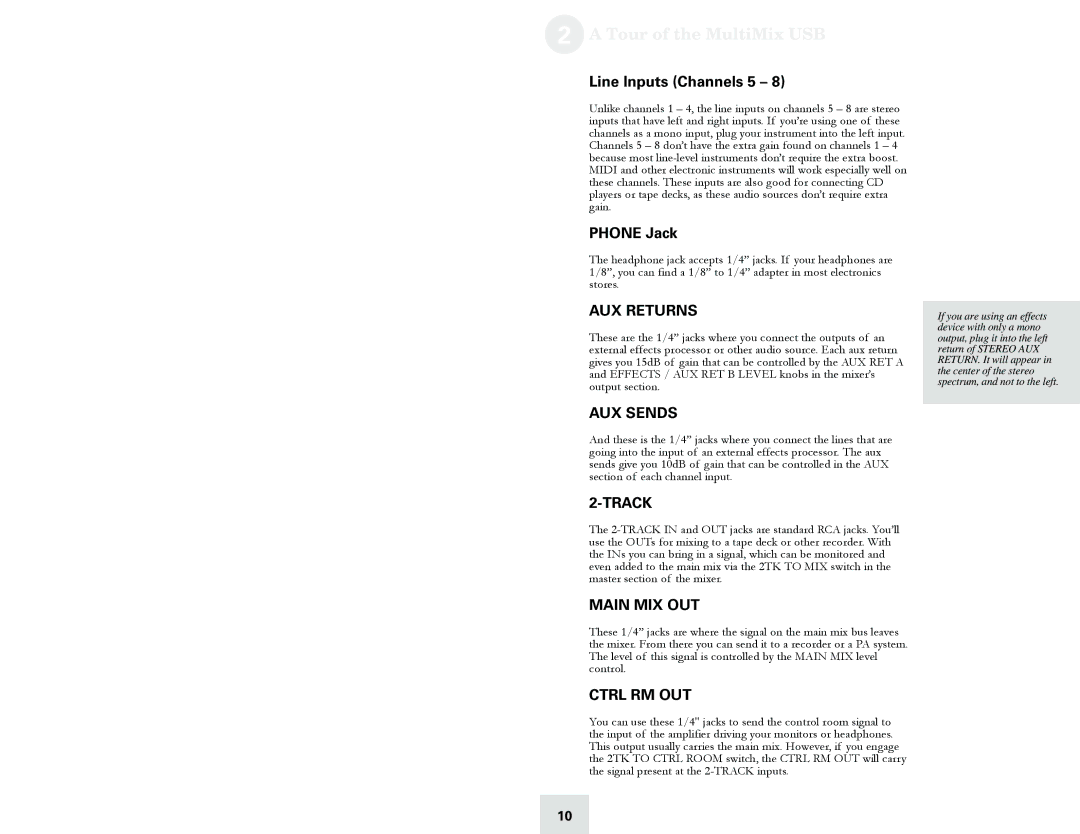
2 A Tour of the MultiMix USB
Line Inputs (Channels 5 – 8)
Unlike channels 1 – 4, the line inputs on channels 5 – 8 are stereo inputs that have left and right inputs. If you’re using one of these channels as a mono input, plug your instrument into the left input. Channels 5 – 8 don’t have the extra gain found on channels 1 – 4 because most
PHONE Jack
The headphone jack accepts 1/4” jacks. If your headphones are 1/8”, you can find a 1/8” to 1/4” adapter in most electronics stores.
AUX RETURNS
These are the 1/4” jacks where you connect the outputs of an external effects processor or other audio source. Each aux return gives you 15dB of gain that can be controlled by the AUX RET A and EFFECTS / AUX RET B LEVEL knobs in the mixer’s output section.
AUX SENDS
And these is the 1/4” jacks where you connect the lines that are going into the input of an external effects processor. The aux sends give you 10dB of gain that can be controlled in the AUX section of each channel input.
2-TRACK
The
MAIN MIX OUT
These 1/4” jacks are where the signal on the main mix bus leaves the mixer. From there you can send it to a recorder or a PA system. The level of this signal is controlled by the MAIN MIX level control.
CTRL RM OUT
You can use these 1/4" jacks to send the control room signal to the input of the amplifier driving your monitors or headphones. This output usually carries the main mix. However, if you engage the 2TK TO CTRL ROOM switch, the CTRL RM OUT will carry the signal present at the
10
If you are using an effects device with only a mono output, plug it into the left return of STEREO AUX RETURN. It will appear in the center of the stereo spectrum, and not to the left.
